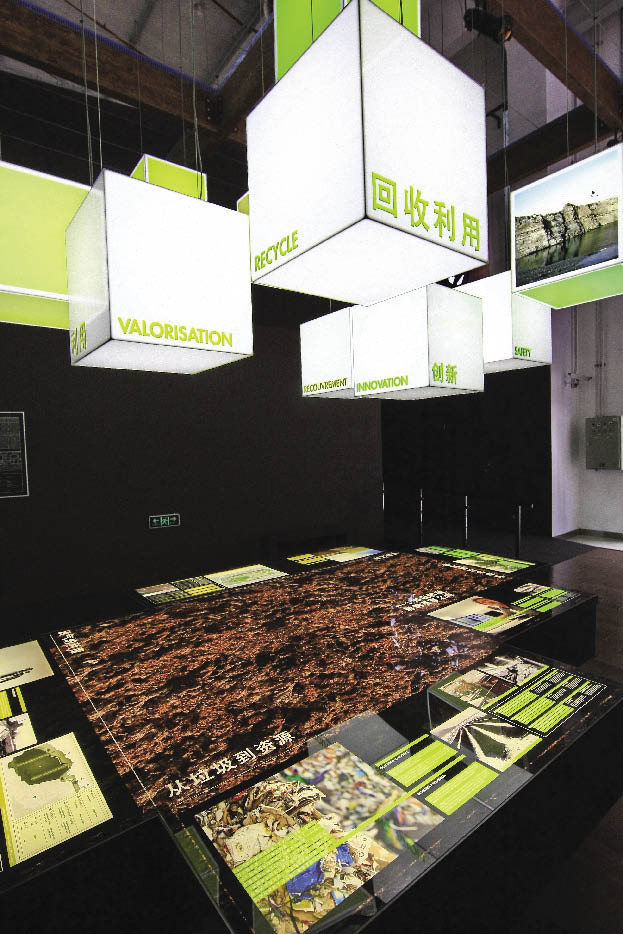Out of Sight, Not Out of Mind
By staff reporter ZHANG HONG
The Montreal Pavilion demonstrates through multimedia how an urban dump site has been turned into a beautiful park. Yu Xiangjun
GARBAGE, shortages of water and diminishing energy resources are the triple miseries of Chinese municipalities, bottlenecking an otherwise powerful momentum in urban development. At the Shanghai Expo, several pavilions are offering answers, and while waste management solutions may be the least sexy of the three, they’ve gotten a lot of attention. Ugliness is being made beautiful as well as functional.
Live in It – Construction Waste
You can live in garbage. The Expo Park is a prime example of how to turn construction waste into building materials. “Ordinary concrete is 70 percent cement, but we substituted 40 percent of that expensive material with crushed cinder and slag,” says Wang Wei, chief engineer of the Shanghai Research Institute of Building Science, referring to the “Eco-house in Shanghai.” This case exemplifies the most energy-saving life style achieved to date in China.
Other waste materials used in the construction of this highly efficient and stylish home include bricks made of silt dredged up from the Yangtze River bottom, 150,000 old bricks retrieved from dismantled old houses in the Shikumen neighborhood, and bricks made of construction waste, cinder and fine sand from the mouth of the Yangtze. All the staircases and wooden components of the eco-house come from dismantled buildings. Even the tabletops are made of waste solar panels. The designers and builders collected the unwanted goods and turned them into ingenious new utilities and features.

